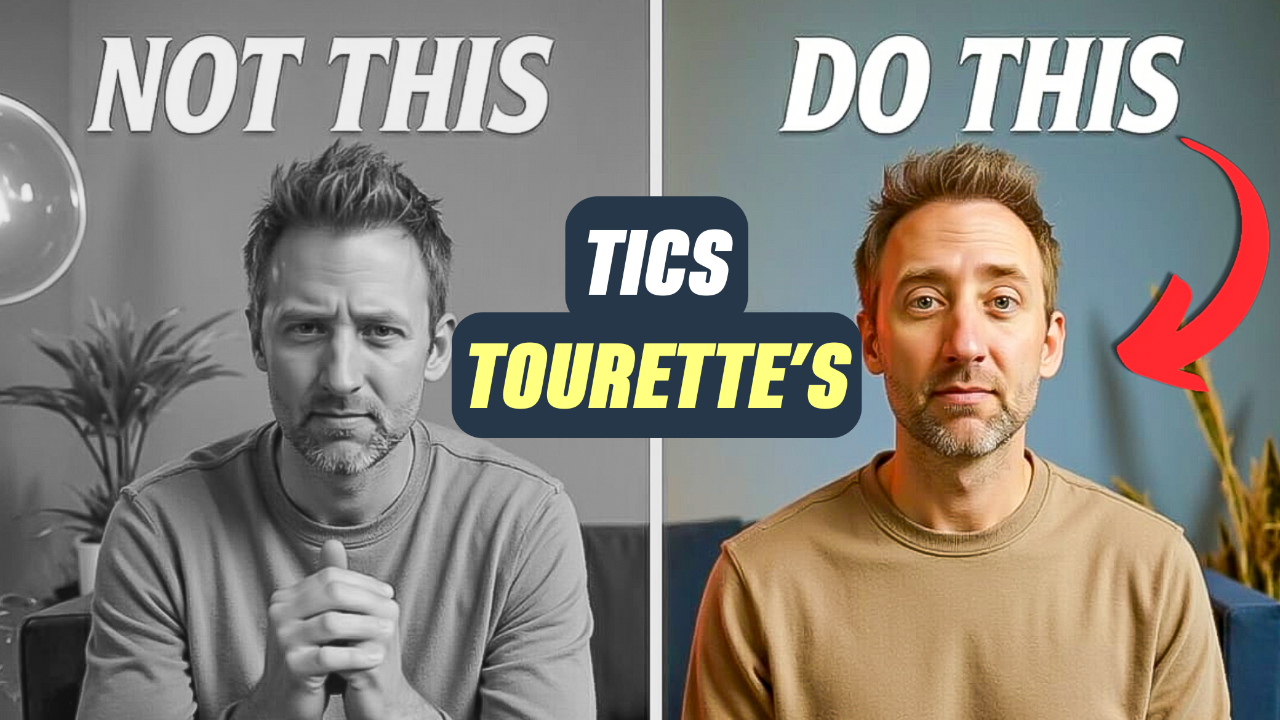How to Treat Tics: The Technique That Actually Works
Nov 12, 2025
If you've ever tried to hold back a tic, you know that feeling. It seems like the right move, like you're showing control. But here's the truth: fighting tics usually makes them stronger. Let me explain why this happens and what actually works instead.
The Problem with Tic Suppression
When you try to stop a tic, you're tensing muscles, holding your breath, and gritting your teeth mentally. Maybe you make it through a few seconds or even a minute. But what's really happening inside? Your brain is building up what researchers call the premonitory urge - that uncomfortable tension right before a tic.
Eventually, you can't hold it anymore. The tic bursts out, often stronger than if you'd just let it happen naturally. This is called the rebound effect. Think of it like holding a ball underwater - the harder you push down, the more forcefully it pops back up.
The Science Behind the Struggle
Neurologically, the circuits in your brain that control movement urges work like a pressure cooker. The basal ganglia, which helps control movement, can't properly filter out these signals. The more your brain fights the urge, the stronger it gets.
This is why pure suppression feels exhausting. You might make it through school or a meeting without doing tics, but afterward you're drained and your tics explode. Sound familiar?
What is CBIT and How Does It Help?
CBIT stands for Comprehensive Behavioral Intervention for Tics. I know, big term. But here's what makes it different: it looks like tic suppression on the outside, but on the inside, it's actually rewiring your brain.
Step 1: Awareness Training
First, you need to figure out when your urges happen. Does it happen at school? During dinner? When you see certain colors? We keep track of it all. You've got to know when they're happening and why, so you can understand your environment.
Step 2: Creating a Competing Response
Here's where the magic happens. Instead of just saying "hold it back," we create a competing response. This means using possibly the same muscle group, but in a different way.
For example, let's say your shoulder goes up as a tic. Instead of just trying to hold it still, you might:
- Pay close attention to exactly how the movement happens
- Use the opposite motion (if it goes up, gently push down or hold straight)
- Make it subtle enough that you can do it anywhere
- Hold it for at least a minute
How This Retrains Your Brain
When that urge happens, you're being more intentional about it. The urge is there - maybe it's a 3 out of 10 or a 7 out of 10. You use your competing response and sit with that feeling. You might even use phrases like "cool, I can handle this urge" or "it's going to go up, then it's going to go down."
The key insight? Your brain learns that the feeling can go away without doing the tic. You hold your competing response for at least a minute or until that urge goes down at least halfway. Then you relax. If the urge comes back, you know exactly what to do.
Competing Responses for Different Tics
Motor Tics
For a shoulder shrug tic, you might press your elbow gently to the side of your body. For eye blinking, you might do slow, controlled blinks or gentle downward eye movements.
Vocal Tics
For vocal tics where air is coming out, you do the opposite. Breathe in and breathe out through your nose instead. Focus on that controlled breathing pattern as your competing response.
Practice Makes Progress
We schedule times to practice. Since you've been tracking your tics, you know that right before dinner is a big time for them. Perfect - you're ready to go with your competing responses. You also practice throughout the day when urges pop up.
Creating Tic Hierarchies
Write down all your tics. Rank them from easiest to hardest. Which ones get in the way the most? Start with the manageable ones and work your way up.
Understanding Environmental Triggers
Sometimes tics happen more in certain situations. Maybe they spike during homework time. If taking a break from homework becomes the pattern, your brain might learn "tics = escape from homework." We need to figure out those moments and be ready for them.
The Bottom Line: You Don't Have to Fight Alone
Here's something really important: if your tics don't interfere with your life, you don't have to treat them. Plenty of people live happy, full lives doing tics. There's no shame in having tics, and it's completely your choice whether to work on them or not. You're cool either way.
But if you want to manage them, CBIT gives you real tools. And here's the best part: as you practice these competing responses, the tics actually start to reduce. You won't have to do the competing responses forever - they're not becoming your new tic. Over time, many people find they need them less and less.
Getting Started Today
Want to start right now? Here's what you can do:
- Take a piece of paper and start paying attention to when your tics happen most
- Write down what triggers them
- Notice what's happening in your environment
Something interesting happens when people start tracking their tics with this kind of awareness - they often start doing them less, even before trying competing responses. It's like your brain responds to meaningful attention differently than anxious suppression.
You don't have to figure this out alone. Whether you're someone with tics, a parent, a teen, or a therapist, there are proven methods that work. The key is moving from suppression to retraining - and that makes all the difference.
















